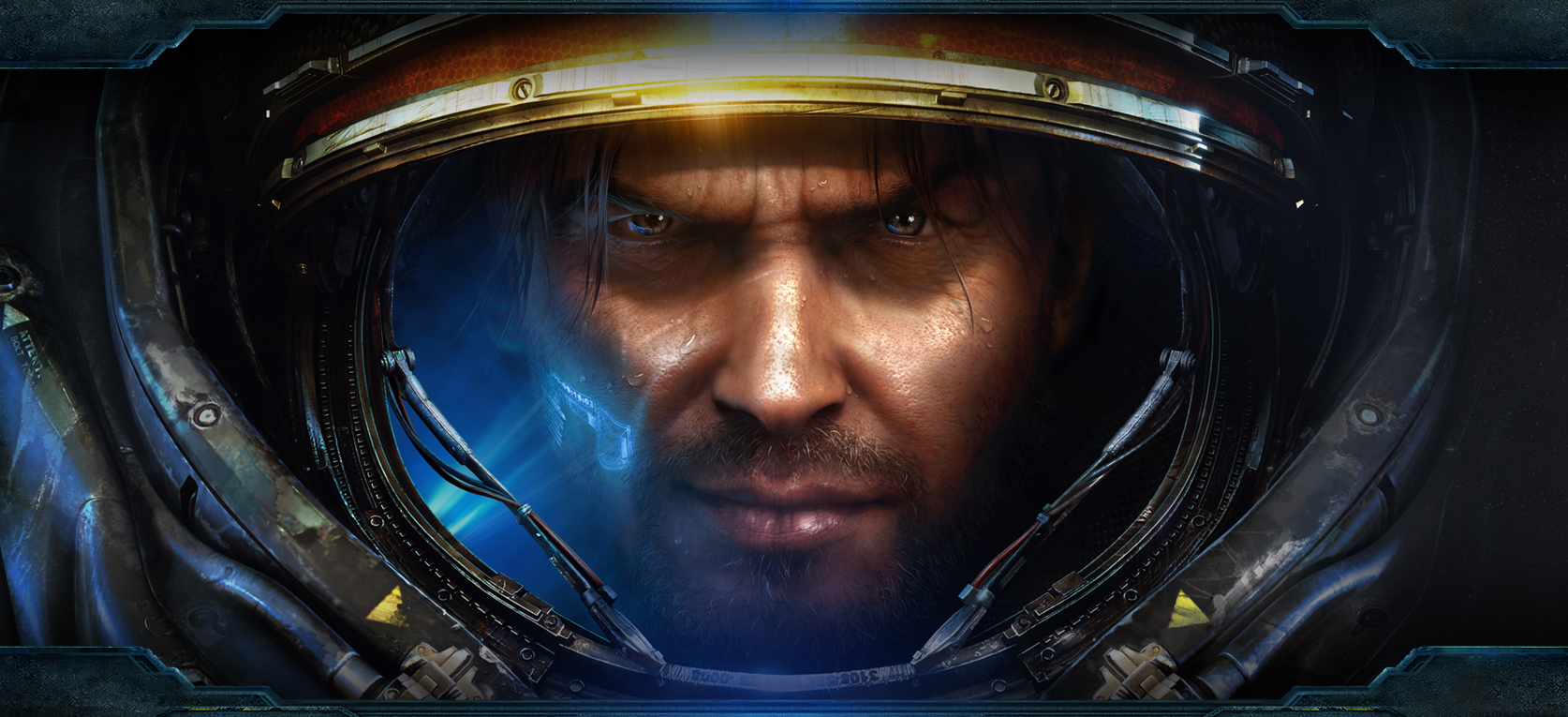Our Verdict
A gloriously well crafted campaign welded to a near Olympic competitive experience. StarCraft II is practically essential.
PC Gamer's got your back
This is Blizzard's most polished game to date.
Forget StarCraft's reputation as a punishing, multiplayer click-fest played only by rocket-powered Korean pro-gamers. StarCraft II: Wings of Liberty includes a lengthy and compelling singleplayer campaign, alongside some of the best multiplayer and co-op functionality I've seen. It offers a kind of baffling but welcome nostalgia. It looks, sounds, plays and feels like a game you may have loved from over ten years ago – the original StarCraft. When you sit down to play it for the first time, if you're a PC gamer of any experience at all, you'll immediately understand what's going on, and what you need to do to succeed.
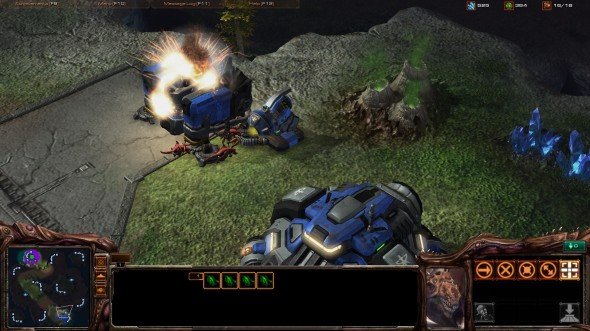
Yet this is clearly new and modern. It has a slick and gorgeous front-end, beautifully textured backdrops, 7.1 surround sound and superbly integrated achievements, leagues and challenges. Office workers will discover that their savegames travel from home to their work PC and back again thanks to cloud saving. If friends are playing, you can hook up with them via Facebook. And yes, frustratingly, it continues the modern trend of requiring you to be online to play, even in singleplayer. Although if you're disconnected during a mission, you're not booted out – you just lose the ability to earn achievements in the campaign.
Raynor shines
Let's examine that campaign. You play Jim Raynor, veteran space marshall, part-time cowboy. He is world weary, drunk and grizzled. He has faced multiple threats to the galaxy, from human dictators and rebellious traitors, to the repellent Zerg – squishy cartoon bugs that can infest a planet and tear it apart. And there are his old sparring partners and occasional allies the Protoss: mystical space-elves. In the original StarCraft, Raynor and the Protoss formed a loose alliance against the Zerg. That's all been forgotten. Now, the human dictators are being dicks, the Protoss are back on the scene, and the Zerg are advancing. It's the perfect time to lead an army.
And what an army. In the campaign you (mostly) lead the Terran forces – heavy metal space warriors that start every battle with a cigar fixed firmly to their bottom lip.
The Terran units at your command are brilliant. I love the Marauders: robot-suited men with rocket launchers for hands. And I adore the Siege Tanks, which drive into position before planting extended feet firmly into the ground and pounding away with an upturned artillery battery. I think the basic marines are hilarious, particularly when upgraded with a small shield and dosed with stim packs (they run faster, shoot quicker and die easier). And I've got a complete soft spot for the Firebat: a singleplayer-only soldier with flamethrowers for fists.
Terran units ooze expression. It's not just in their barks and responses to being clicked on. It's in their art and animation. They jog into battle, arms swinging, eager to please. They die in glorious balls of goo. When a tank takes one too many rounds, it doesn't just fall apart, it explodes. StarCraft II is intensely readable – the results of every artillery shell and Void Ray beam instantly apparent.
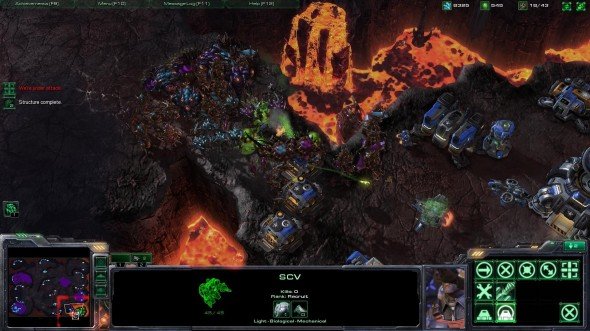
The tech each side brings to the party might be advanced, but in singleplayer you expect its application to be unsophisticated. For years now, RTS campaigns have repeated the same simple formula: secure a base, ramp up production by harvesting local resources, hold the fort until you've got a walking ball of death, and then burst through any defences. Real-time strategy games have been killing the genre with this lack of imagination.
StarCraft II shows us how it's meant to be done.
The singleplayer campaign is superb. 27 missions, each lasting 30-45 minutes, each containing a unique twist or idea that raises it above a simple base push. Early on, you're asked to defend a colony from infestation: hundreds of Zerg-infected humans and marines will shamble towards your gates at night. Holding out means building bunkers and filling them with Firebats and Marines, and praying they hold. The same zergbie humans are burnt to a crisp when the sun rises the next morning: that's your cue to push out with Hellions – buggies with roof-mounted flamethrowers – to torch the remnants of the infested colony.
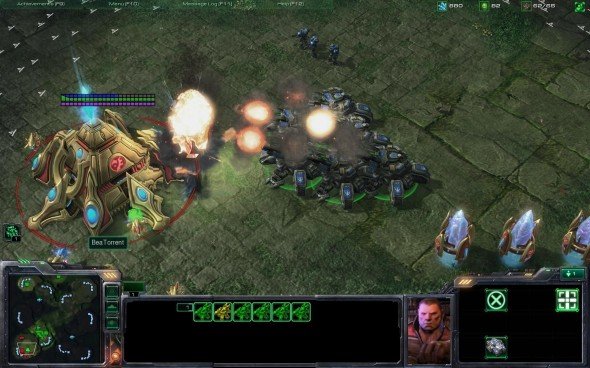
As the sun sets and rises every five minutes, there's a gorgeous transition, each little soldier casting a long purple shadow. And when the sun bursts through, the poor zombie souls flail and wave as they roast alive. You can see the effort and thought that has gone into every little model, every tiny animation.
The zombie mission might be a standout, but it's not alone. I've enjoyed nearly every mission, including a raid on a prison planet that played out like a beginner's version of Defence of the Ancients: you control a single overpowered hero while waves of basic marines throw themselves at the defences. And then there was the race for resources where I was fighting over mineral patches and scrap metal to buy off a vast mercenary army. When you can finally afford the bribe, their unstoppable regiments are turned over to your control. Or there's a last-ditch defence of a planet marked for extermination, where a Protoss mothership can only be shot down once you've defeated three powerful bases. All the while, the mothership is vapourising infected colonists.
None of these objectives can be completed by simply selecting everyone and sending them forward, nor would that solution be fun. The fun in singleplayer RTS is in figuring out the right combination of soldiers to send forward, and how best to neuter the opposition. StarCraft II delivers the most entertaining options, and the most entertaining solutions. You can't just select ten siege tanks and send them toward a Zerg base – they might outrange the Spine Crawler defences (horrific fleshy spikes), but they'll get chewed up by fliers, such as Mutalisks, and any zerglings that can reach close range. You'll want a mixed force of vehicles and infantry, tailored to the situation. Maybe a group of Vikings to take out any fliers, supporting Marauders. When the fliers are down, the Vikings will sprout legs and turn into heavy armoured walkers.
And anyway, you might not have access to the optimal unit mix at the time. You might have to improvise.
Plot doctor
Surprisingly, StarCraft II's campaign allows for a certain degree of choice. Once you're past the introductory storyline, in which Raynor gathers his forces, you're usually allowed to choose between two or three different missions to progress. Each ties into a different character's storyline. There's Tychus Findlay, an absurdly muscled marine recently released from prison – he's being paid to find alien artifacts that may or may not relate to a terrible prophecy. There's Ariel Hanson, a gorgeous (admit it – you would) scientist searching for a cure to the Zerg infection, while trying to save refugee colonists. And there's Gabriel Tosh, a mercenary-cum-voodoo warrior with a dark secret. He likes dolls. The writing might not be that sharp, nor the characterisation more than ludicrous butch cliché, but it's passable.
One consequence of picking and choosing missions is that you may enter scenarios without certain key technology, and have to improvise less than ideal solutions. Which, it turns out, is all kinds of fun.
Most of StarCraft II's stories end with a choice of finales. Do you release prisoners from New Folsom, or shut down the secret programme they're recruited for? Do you allow Protoss to purge a homeworld, or save the colonists from certain death, even though they may be infected? The level structure allows you at least minimal choice, and therefore to engage better with the overarching storyline. And even though StarCraft II is going to get two expansions, few will feel shortchanged by the ending here, or the sheer number of missions.
How stories play out, and the rewards for completing missions, are brought to life by StarCraft II's gloriously over-the-top front-end, which harks back to the beautiful between-mission interfaces of such ancient PC games as Descent: Freespace and X-Wing. As Raynor, aboard his flagship Hyperion, you don't select missions, or research unit upgrades, or hire mercenaries from simple menus – you go to a laboratory, or the bridge, or the cantina, and select them by using consoles or computers. It's frippery of the best kind: pure atmosphere. I'm an absolute sucker for this sort of silliness – I could spend hours just clicking on the TV in the bar and watching fake news broadcasts.
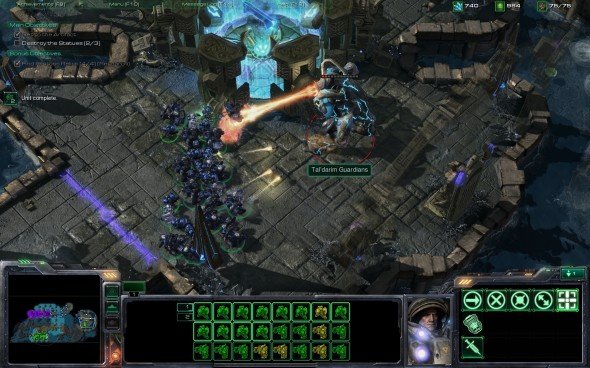
R&D
I was also pleasantly surprised at the choice available when customising my army. At its most basic, you can purchase upgrades for your favourite units and buildings. Timed charges for your Reapers (shock troopers that can jetpack into the back of a base), or a permanent cloak for your Ghosts (elite infantry that can call down nukes). There's also research: each mission offers sub-objectives and collectible items: relics and Zerg DNA . Two separate tech trees, one for Zerg, one for Protoss, offer parallel development routes. At five point intervals, you're asked to make a permanent choice to upgrade your army. At one branch of the Zerg tree, you can pick a heavy transport, or robot dogs. You can increase your bunker resilience, or bolt a mounted gun to the roof. And there are mercenaries to hire: elite troops that can be dropped into the battlefield.
Making the choices, spending your scarce cash, is hard. Every option seems useful, and trying to chose between them will lead to a furrowed brow.
What the campaign fails to do is deliver scenarios in which you're free to use the complete range of units and abilities against competent AI opponents. That's where the skirmish mode comes in. The AI is ferocious: occasionally rushing, sometimes holding back with a mixed army. On medium, most players will find it a challenge. You're also free to create mixed matches of human and AI players, or pitch AI s against each other. The results are fascinating, and a near perfect training ground for online. Which is where the other fun begins.
Multiplayer
I think many new players are nervous about venturing online – particularly given the reputation of pro-players. In practice, the new Battle.net delivers excellent matchmaking and leagues, for teams of up to four. The sides feel relatively evenly matched, and any cheesy rushes have easy-to-remember counters. There are far more Terran players online in the lower leagues, presumably thanks to the campaign serving as an extended training level, but they're certainly not dominating.
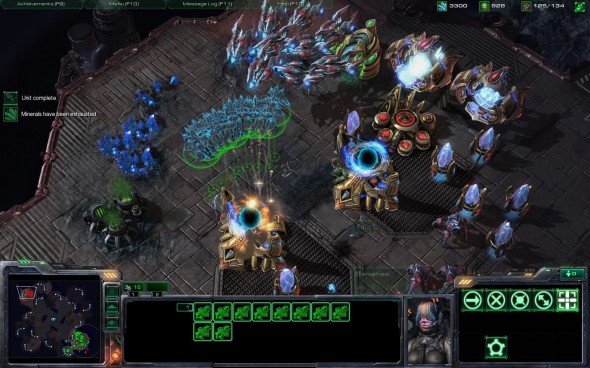
Millions of words will be expended on whether certain units or combinations and counters are unbalanced. They can be summed up in one sentence: StarCraft II is more than ready for competitive gaming. What imbalances there were have been addressed in a long, long beta period.
The best way of describing the joy of StarCraft II online is this: even if you win, you are usually left exhausted. The mental effort required to scout your opponent, match their economy, deliver a counter and execute a plan will leave you drained and broken. If you lose, the mental effort is the same, sometimes greater. But you never leave unhappy. You simply want to learn where you went wrong, how you can improve and what to change next time. If I win, I want to jump back in and prove myself again. If I lose, I want to try again, maybe a different build order, maybe scout earlier.
New or nervous players have plenty of opportunity to learn in the Practice League. These early matches are played on modified maps (most block off the entrance to your base, to prevent an early rush), and don't contribute to your overall ranking. But when the bug finally gets to you, you can skip them and head right to your placement matches. There, you're dropped into regional leagues and matched with players of broadly similar skill.
Yes, StarCraft is fiercely competitive. But the community is largely friendly and receptive. Most matches online are preceded by a 'glhf', and the losers - even AI players - will sign off with a 'gg'.
And that's the point. It is a good game. It's a great game. Playing it, repelling wave upon wave of Zerg forces in the singleplayer levels, bullying your way into the league rankings in the relentless multiplayer leagues, or just hanging about in the luxurious campaign front-end, is to be reminded that PC gaming has always been the most vital, and most exciting platform on the planet. More please.
A gloriously well crafted campaign welded to a near Olympic competitive experience. StarCraft II is practically essential.
